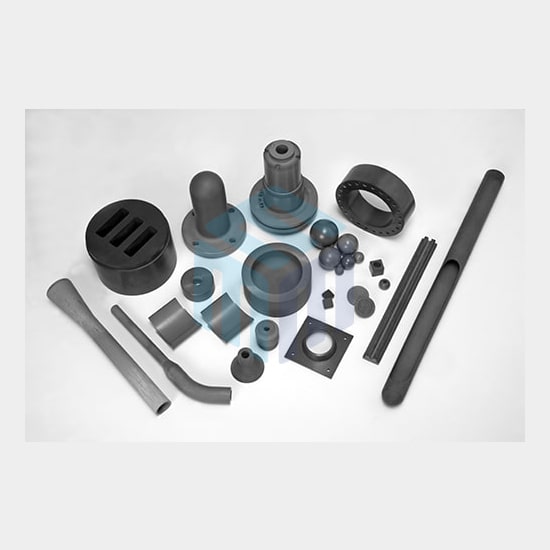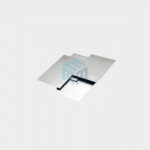Types of Silicon Carbide (SiC) Ceramics and Their Comparison:
- Reaction-Bonded Silicon Carbide (RB-SiC):
-
-
- Manufacturing Process: Produced by infiltrating molten silicon into a porous carbon preform, leading to silicon carbide formation through a reaction with carbon.
- Microstructure: characterized by a two-phase microstructure consisting of silicon carbide and residual silicon.
- Density and Porosity: It generally exhibits higher porosity and lower density compared to other SiC ceramics.
- Mechanical Properties: It offers good strength and thermal shock resistance but may have lower mechanical properties due to the presence of residual silicon.
- Applications: Commonly used in applications where thermal shock resistance is crucial, such as kiln furniture and heat exchangers.
- Thermal Conductivity: Demonstrates relatively lower thermal conductivity compared to other SiC ceramics.
-
- Sintered Silicon Carbide (SSiC):
-
-
- Manufacturing Process: Created by sintering a mixture of silicon carbide powder and additives at high temperatures to form a solid ceramic material.
- Microstructure: Features a homogeneous microstructure with densely packed silicon carbide grains.
- Density and Porosity: Offers higher density due to the densification process during sintering.
- Mechanical Properties: Provides excellent mechanical properties, including high strength, hardness, and wear resistance.
- Applications: Preferred for applications requiring high wear resistance and mechanical strength, such as mechanical seals and cutting tools.
- Thermal Conductivity: exhibits high thermal conductivity, suitable for applications requiring efficient heat transfer.
-
- Recrystallized Silicon Carbide (RSiC):
-
- Manufacturing Process: Produced via chemical vapor infiltration, depositing silicon carbide on a porous carbon preform through chemical reactions.
- Microstructure: presents a single-crystal or coarse-grained microstructure, depending on the manufacturing process.
- Density and Porosity: Exhibits varying porosity levels depending on the application, typically lower than RB-SiC.
- Mechanical Properties: Features good mechanical strength, high-temperature stability, and excellent oxidation resistance.
- Applications: Often utilized in applications demanding high-temperature stability and resistance to corrosive environments, such as semiconductor processing equipment.
- Thermal Conductivity: Typically displays moderate to high thermal conductivity, depending on the manufacturing process and porosity.
Each type of SiC ceramic offers unique properties and is suitable for specific applications. Understanding these differences is crucial in selecting the appropriate material for various engineering and industrial needs.
M-Kube is an Indian company catering products and solutions in India, Australia, the USA, New Zealand, Singapore, Malaysia, South Korea, and Vietnam. Our team of experts across different platforms can discuss and customize your requirements as per your needs.
Please reach out to us at marketing@mkubeenterprise.co.in or call us at +91-9898892994 to discuss your projects.






